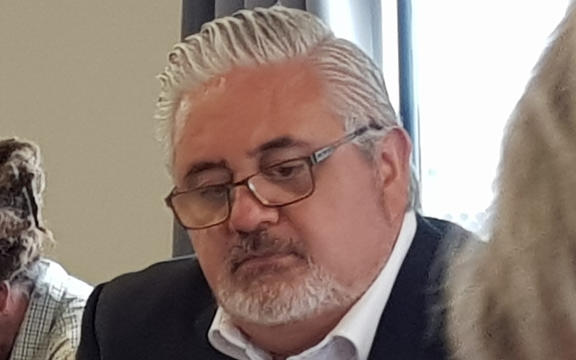
If it goes ahead, the Sugarloaf Quarry - halfway between Fox Glacier and Bruce Bay - could become the last quarry ever established in South Westland.
A Department of Conservation hearing over access to the old quarry was held in March. It already has resource consent.
The applicant is Kokiri Lime Ltd and director Mackley Ferguson, who says the rock would protect Bruce Bay and Franz Josef.
Rock being trucked from the nearby quarry would reduce carbon emissions, he said.
But West Coast iwi said Federated Mountain Clubs was trying to undermine the Karangarua project in its approach to the Minister of Conservation Dr Aleysha Verrall, urging the minister to take the decision out of local Doc hands.
"Puketahi [Surgarloaf] is a long way from the mountains, but that hasn’t stopped these environmental zealots from sticking their oar in," Ngati Mahaki (Makaawhio) chairman Paul Madgwick and Ngati Waewae chairman Francois Tumahai said.
"FMC have told the minister this will destroy pristine forest on public conservation land in the South West New Zealand World Heritage Area. Conveniently, they omit to say that the proposal covers a mixture of private land and Doc stewardship land, and that it involves reopening a historic quarry that operated till the 1970s."
The quarry was in a World Heritage Area, but world heritage was meant to co-exist with tangata whenua who had been living with the landscape for a thousand years.
South Westland’s high rainfall and fierce rivers constantly threatened the State Highway, so a nearby source of good quality quarry rock was essential to keep this road open and to ensure communities remained viable.
They asked why Federated Mountain Clubs was turning a blind eye to the massive carbon footprint of carting rock from Whataroa to Bruce Bay, and then torpedoing plans to reopen an old quarry at Karangarua.
The only alternative was to again excavate buried rock from the bed of the Waiau (Waiho) River at Franz Josef - "an expensive exercise in hit and miss".
They urged the Minister of Conservation to ignore this "outside interference" from FMC, and leave the decision-making on the ground with the local Doc office "where it belongs".
They also drew attention to the FMC strategic plan 2018-20, which said the group must work towards increasing dialogue with iwi, apply tikanga Maori in their activities and strive to greater use of te reo Maori in their documentation.
"FMC have sprinkled te reo terms throughout their strategy but don’t practice what they preach - they are showing no respect for Poutini Ngai Tahu tino rangatiratanga."
Federated Mountain Clubs president Jan Finlayson yesterday defended its position, describing the quarry proposal as an insult to nature, as well as New Zealand’s co-written laws and regulations.
She had been in touch with Unesco and said it was "taking an interest".
Unesco status was an international obligation, she said, when asked why the group wanted the decision made by the minister.
"We would like the decision to be made at an appropriately high level."
When Doc signed up for World Heritage status, it promised to treasure the area, Ms Finlayson said.
"Words have got to mean something."












